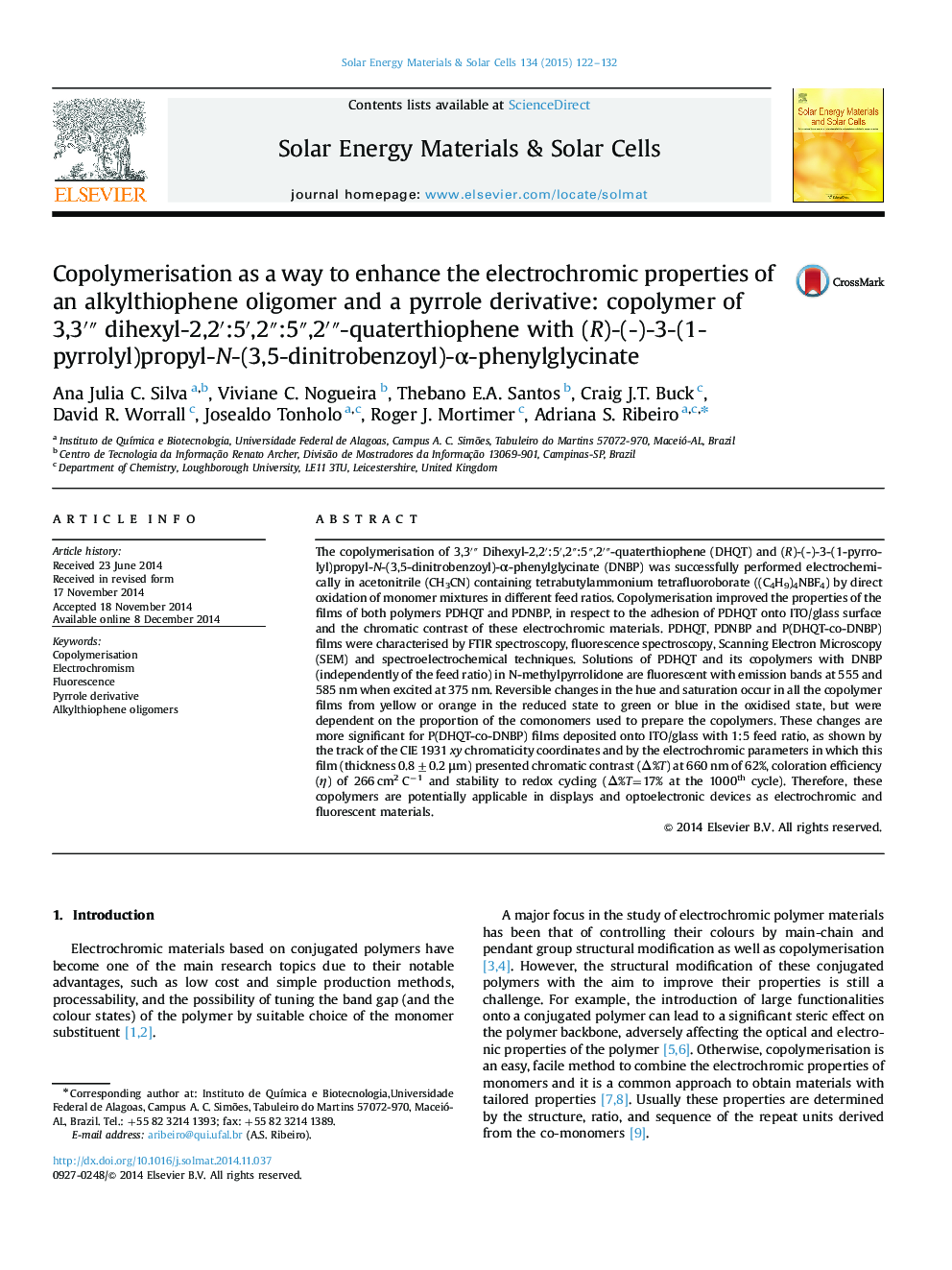| کد مقاله | کد نشریه | سال انتشار | مقاله انگلیسی | نسخه تمام متن |
|---|---|---|---|---|
| 77899 | 49309 | 2015 | 11 صفحه PDF | دانلود رایگان |

• DHQT and DNBP mixtures in different feed ratios were electrochemically copolymerised.
• Copolymerisation improved the electrochromic properties of both films PDHQT and PDNBP.
• Copolymer films present colour variation from yellow/orange to green/blue.
• Solutions of DHQT, PDHQT and copolymers in N-methyl pyrrolidone are fluorescent.
• These copolymer films might be applicable in displays and optoelectronic devices.
The copolymerisation of 3,3′″ Dihexyl-2,2′:5′,2″:5″,2′″-quaterthiophene (DHQT) and (R)-(-)-3-(1-pyrrolyl)propyl-N-(3,5-dinitrobenzoyl)-α-phenylglycinate (DNBP) was successfully performed electrochemically in acetonitrile (CH3CN) containing tetrabutylammonium tetrafluoroborate ((C4H9)4NBF4) by direct oxidation of monomer mixtures in different feed ratios. Copolymerisation improved the properties of the films of both polymers PDHQT and PDNBP, in respect to the adhesion of PDHQT onto ITO/glass surface and the chromatic contrast of these electrochromic materials. PDHQT, PDNBP and P(DHQT-co-DNBP) films were characterised by FTIR spectroscopy, fluorescence spectroscopy, Scanning Electron Microscopy (SEM) and spectroelectrochemical techniques. Solutions of PDHQT and its copolymers with DNBP (independently of the feed ratio) in N-methylpyrrolidone are fluorescent with emission bands at 555 and 585 nm when excited at 375 nm. Reversible changes in the hue and saturation occur in all the copolymer films from yellow or orange in the reduced state to green or blue in the oxidised state, but were dependent on the proportion of the comonomers used to prepare the copolymers. These changes are more significant for P(DHQT-co-DNBP) films deposited onto ITO/glass with 1:5 feed ratio, as shown by the track of the CIE 1931 xy chromaticity coordinates and by the electrochromic parameters in which this film (thickness 0.8±0.2 μm) presented chromatic contrast (Δ%T) at 660 nm of 62%, coloration efficiency (η) of 266 cm2 C−1 and stability to redox cycling (Δ%T=17% at the 1000th cycle). Therefore, these copolymers are potentially applicable in displays and optoelectronic devices as electrochromic and fluorescent materials.
Figure optionsDownload as PowerPoint slide
Journal: Solar Energy Materials and Solar Cells - Volume 134, March 2015, Pages 122–132